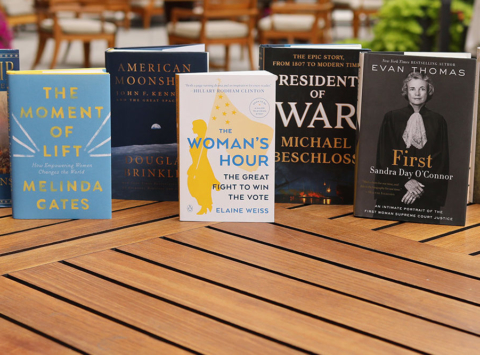This Spotlight is authored by guest writer Caitlin Kelly as part of a special blog series by the Case Foundation featuring Be Fearless stories from the field. Follow along with us as we meet people and learn about organizations that are taking risks, being bold and failing forward in their efforts to create transformative change in the social sector.
It can happen to the longest established, best-funded and most carefully-run organizations—a sudden disaster that throws off months or years of planning, disrupting its ability to continue important projects. It might be an essential piece of equipment, a truck or generator, that breaks down and can’t be replaced using restricted funds. It might be a natural disaster that disrupts operations, with no contingency capital to address it.
Whatever the catastrophe, Open Road Alliance (ORA) stands ready to help, able to offer grants of up to $100,000—with decisions made within two to six weeks of applying. Their average grant is $76,000 and, since 2012, it has awarded $3.5 million to groups including the Global Press Institute and the Grameen Foundation.
“Those ‘Oh my God’ moments are where our funding is focused,” says Executive Director Maya Winkelstein.
The typical funding model “is not working on a micro or macro level,” she adds. “On a micro level, it traditionally takes six to nine to 12 months for a grant application to be approved and to access the capital. It’s so restricted and there’s no mechanism to address problems, so [when problems arise] that initial investment and all the work is lost. So, we provide that money. We’ll be fast and flexible and we’ll solve the problem.”
On a macro level, the inherent power imbalance between funders and applicants perpetuates a culture of obfuscation, she adds. “There’s a lack of transparency and honesty thanks to the very real fear NGO’s have” to be truthful about troubles they may face and need funds to solve.
Some ORA grants are also recoverable funds, offered at varying interest rates, essentially a bridge loan to pull a group through crisis—knowing that committed income from their funders will eventually arrive. That program began in 2014, scaling up in 2015, a response, says Winkelstein, “to what NGO’s told us they needed. We found that when organizations encounter these unexpected obstacles and need money the problem isn’t access to capital, but access to capital right now.” ORA offers these loans in three situations: when the obstacle is cash flow, when capital is needed for unexpected growth and when raising the needed funds would simply take too long.
Recoverable grants allow Winkelstein—and ORA’s founder, philanthropist Laurie Michaels, whose personal income funds their projects—to take much greater risks than other groups. “The opportunity cost is much lower,” explains Winkelstein. When a traditionally funded project fails or stalls, “you’ve basically lost a bet and that makes people risk-averse. We’re betting on impact, not financial return, because we use the same re-paid funds to make multiple bets over and over. It allows us to take more risks.”
But, like every funder, ORA insists on regular reporting. “When we accept an applicant, it has specific measurables for the short term and we talk to them four times a year, plus a full report at year’s end,” says Michaels. “We make as much effort to judge our [own] effort as anything else.”
Their decisions—made quickly, with applications accepted on a rolling basis—are sometimes a “no-brainer” and sometimes, Michaels admits, “we’re teetering on the edge of ‘Is this risk unacceptable?’ We don’t expect every project to be perfect.”
Michaels urges other foundations, and grant applicants, to be far more open and honest about their projects’ potential difficulties. “One of our goals is to have a discussion of risk, and planning for risk as a normal part of any grant application. At the moment, there’s no place to openly address what could go wrong. Not vaguely, but matter-of-factly so I know what they’re up for. What’s your Plan B? Plan C?”
The two—who work from offices in D.C. and Aspen, and without a board of directors—researched their unusual model for a year before starting the organization, consulting other non-profits and philanthropists to determine who they would fund, and under what circumstances. “One of the critical criteria is that the problem be unexpected. Could it have been anticipated? Some of our applicants’ stories are heart-wrenching, but they won’t get funded,” says Winkelstein.
“The unexpected is not a sign of incompetence, but a sign of the world.” After all, she adds, “the private sector calls it a pivot.”
“We believe that philanthropy is going through a fundamental shift, from a charity model to an investment model,” says Winkelstein. “It’s changing from donors’ desires and intentions to seeing this work as an investment, doing good to actually achieve results. That’s where the trends are and the more sophisticated funders are going. They use metrics and look at ROI, an attitude that didn’t exist 20 years ago.”
In their autonomy, sense of urgency and willingness to ask tough, perhaps uncomfortable questions, Michaels and Winkelstein know they’re often working outside typical philanthropic norms. But for ORA, urgency is standard operating procedure.
Feeling inspired? If you’re ready to begin your own Be Fearless journey start by downloading our free Be Fearless Action Guide and Case Studies.





